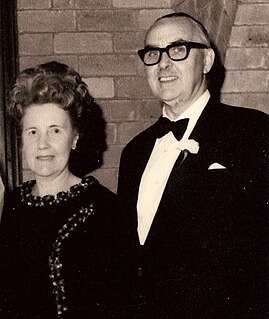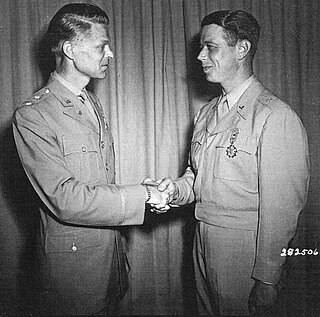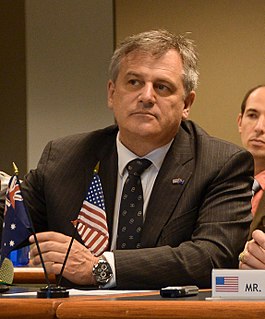Related Research Articles

Porton Down is a science park in Wiltshire, England, just northeast of the village of Porton, near Salisbury. It is home to two British government facilities: a site of the Ministry of Defence's Defence Science and Technology Laboratory (Dstl) – known for over 100 years as one of the UK's most secretive and controversial military research facilities, occupying 7,000 acres (2,800 ha) – and a site of Public Health England. It is also home to other private and commercial science organisations, and is expanding to attract other companies.
The Defence Science and Technology Group (DSTG) is part of the Australian Department of Defence dedicated to providing science and technology support to safeguard Australia and its national interests. The agency's name was changed from Defence Science and Technology Organisation (DSTO) on 1 July 2015. It is Australia's second largest government-funded science organisation after the CSIRO and its research outcomes have enhanced Defence capability and supported operations for over 100 years.
Defence Research and Development Canada is a special operating agency of the Department of National Defence (DND), whose purpose is to provide the Canadian Armed Forces (CAF), other government departments, and public safety and national security communities with knowledge and technology.

The Defence Science and Technology Laboratory (Dstl) is an executive agency of the Ministry of Defence of the United Kingdom. Its stated purpose is "to maximise the impact of science and technology for the defence and security of the UK". The agency is headed by Paul Hollinshead as its Chief Executive,with the board being chaired by Adrian Belton. Ministerial responsibility lies with the Minister for Defence Procurement.
RAAF Base Edinburgh is a Royal Australian Air Force (RAAF) military airbase located in Edinburgh approximately 28 km (17 mi) north of Adelaide, South Australia, Australia and forms part of the Edinburgh Defence Precinct.
Hugh Francis Durrant-Whyte is a British-Australian engineer and academic. He is known for his pioneering work on probabilistic methods for robotics. The algorithms developed in his group since the early 1990s permit autonomous vehicles to deal with uncertainty and to localize themselves despite noisy sensor readings using simultaneous localization and mapping (SLAM).
Edinburgh is an outer northern suburb of Adelaide, South Australia in the City of Salisbury. The suburb was created in 1997, on land straddling Penfield and Salisbury, that was compulsorily acquired by the Commonwealth Government in 1940 in order to manufacture munitions for the war effort during World War II, and later used for a number of defence-related establishments.

David Ronald de Mey Warren was an Australian scientist, best known for inventing and developing the flight data recorder and cockpit voice recorder.

Sir Ernest William Titterton was a British nuclear physicist.
The Australian Defence Organisation (ADO) is composed of the armed forces of the Commonwealth of Australia, the Australian Defence Force (ADF), and the Australian Public Service government department, the Department of Defence which is composed of a range of civilian support organisations.
The Australian Defence Organisation (ADO) is composed of the armed forces of the Commonwealth of Australia, the Australian Defence Force (ADF), and the Australian Public Service government department, the Department of Defence which is composed of a range of civilian support organisations.

William Alan Stewart Butement was a New Zealand-born British-Australian defence scientist and public servant. A native of New Zealand, he made extensive contributions to radar development in Great Britain during World War II, served as the first chief scientist for the Australian Defence Scientific Service, then ended his professional career with a research position in private business.
John Riley is an Australian scientist at the Defence Science and Technology Organisation and former Australian rules footballer who played with Footscray in the Victorian Football League (VFL) and North Adelaide in the South Australian National Football League (SANFL).

Major General Peter Warwick "Gus" Gilmore, is a retired senior officer of the Australian Army. A graduate of the Royal Military College, Duntroon, he was commissioned into the Royal Australian Infantry Corps in 1983 and spent much of his career in special forces. He commanded the Special Air Service Regiment (2001–02), led the first contingent of the Australian Special Operations Task Group in Afghanistan (2001–02), was responsible for the Coalition Advisory Support Team in Iraq (2005–06), and commanded International Security Assistance Force Special Operations Forces (2009–10). Following promotion to major general he held a succession of senior appointments, including Special Operations Commander Australia (2011–13), Deputy Chief of Army (2013–15), and Commander Forces Command (2015–16). His final appointment was as Head Military Strategic Commitments Division from 2016 to 2019.

James McCormack, Jr. was a United States Army officer who served in World War II, and was later the first Director of Military Applications of the United States Atomic Energy Commission.

Alexander ‘Alex’ Zelinsky, is an Australian computer scientist, systems engineer and roboticist. His career spans innovation, science and technology, research and development, commercial start-ups and education. Professor Zelinsky is Vice-Chancellor and President of the University of Newcastle joining the university in November 2018. He was the Chief Defence Scientist of Australia from March 2012 until November 2018. As Chief Defence Scientist he led Defence Science and Technology for Australia's Department of Defence.
The Directorate of Army Research and Analysis (DARA) is a branch of the Australian Army Headquarters and serves as the Army’s think tank. DARA is part of the Army's Modernisation and Strategic Plans division, and is located in Russell Offices, Canberra. DARA provides research and analysis to the Australian Army and Government to support the Army’s modernisation and strategic planning. DARA also promotes professional debate on topics such as the changing character of land warfare and Australia’s strategic environment.
Brigadier Peter Lambert is an Australian public servant and former senior officer in the Australian Army.
Robert Graham Clark is an Australian physicist. He was appointed Professor and Chair of Energy Strategy and Policy at University of New South Wales (UNSW) in 2012. Prior to this he was Chief Defence Scientist from 2008 to 2011 and Professor of Experimental Physics at University of New South Wales, where he established the National Magnet Laboratory and Semiconductor Nanofabrication Facility.
Janis Louise Cocking is a retired Australian metallurgist. Her last post before retirement was as Chief Science Strategy and Program at Defence Science and Technology Group, a branch of the Department of Defence. She retired on 25 July 2018.
References
- 1 2 3 4 Hill, Robert (11 September 2003). "New Chief Defence Scientist Announced". Australian Government, Department of Defence. Retrieved 26 June 2015.
- ↑ Squires, Mandy (17 November 2014). "What defence expert Roger Lough had to say about Geelong's bid for Land 400". Geelong Advertiser . News Corp. Retrieved 26 June 2015.